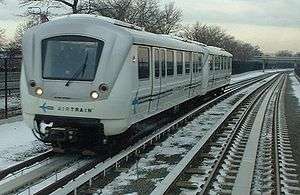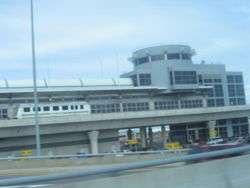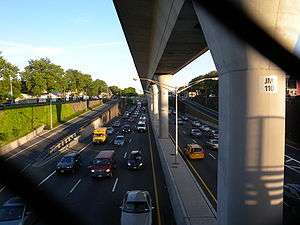AirTrain JFK
| AirTrain JFK | ||||||||||||||||||||||||||||||||||||||||||||||||||||||||||||||||||||||||||||||||||||||||||||||||||||||||||||||||||||||||||||||||||||||||||||||||||||||||||||||||||||||||||||||||||||||||||||||||||||||||||||||
|---|---|---|---|---|---|---|---|---|---|---|---|---|---|---|---|---|---|---|---|---|---|---|---|---|---|---|---|---|---|---|---|---|---|---|---|---|---|---|---|---|---|---|---|---|---|---|---|---|---|---|---|---|---|---|---|---|---|---|---|---|---|---|---|---|---|---|---|---|---|---|---|---|---|---|---|---|---|---|---|---|---|---|---|---|---|---|---|---|---|---|---|---|---|---|---|---|---|---|---|---|---|---|---|---|---|---|---|---|---|---|---|---|---|---|---|---|---|---|---|---|---|---|---|---|---|---|---|---|---|---|---|---|---|---|---|---|---|---|---|---|---|---|---|---|---|---|---|---|---|---|---|---|---|---|---|---|---|---|---|---|---|---|---|---|---|---|---|---|---|---|---|---|---|---|---|---|---|---|---|---|---|---|---|---|---|---|---|---|---|---|---|---|---|---|---|---|---|---|---|---|---|---|---|---|---|---|
 | ||||||||||||||||||||||||||||||||||||||||||||||||||||||||||||||||||||||||||||||||||||||||||||||||||||||||||||||||||||||||||||||||||||||||||||||||||||||||||||||||||||||||||||||||||||||||||||||||||||||||||||||
| Overview | ||||||||||||||||||||||||||||||||||||||||||||||||||||||||||||||||||||||||||||||||||||||||||||||||||||||||||||||||||||||||||||||||||||||||||||||||||||||||||||||||||||||||||||||||||||||||||||||||||||||||||||||
| Type | People mover | |||||||||||||||||||||||||||||||||||||||||||||||||||||||||||||||||||||||||||||||||||||||||||||||||||||||||||||||||||||||||||||||||||||||||||||||||||||||||||||||||||||||||||||||||||||||||||||||||||||||||||||
| Locale | connecting JFK International Airport to various points within Queens, New York City | |||||||||||||||||||||||||||||||||||||||||||||||||||||||||||||||||||||||||||||||||||||||||||||||||||||||||||||||||||||||||||||||||||||||||||||||||||||||||||||||||||||||||||||||||||||||||||||||||||||||||||||
| Stations | 10 | |||||||||||||||||||||||||||||||||||||||||||||||||||||||||||||||||||||||||||||||||||||||||||||||||||||||||||||||||||||||||||||||||||||||||||||||||||||||||||||||||||||||||||||||||||||||||||||||||||||||||||||
| Services | 3 | |||||||||||||||||||||||||||||||||||||||||||||||||||||||||||||||||||||||||||||||||||||||||||||||||||||||||||||||||||||||||||||||||||||||||||||||||||||||||||||||||||||||||||||||||||||||||||||||||||||||||||||
| Daily ridership | 17,772 (2014 average) | |||||||||||||||||||||||||||||||||||||||||||||||||||||||||||||||||||||||||||||||||||||||||||||||||||||||||||||||||||||||||||||||||||||||||||||||||||||||||||||||||||||||||||||||||||||||||||||||||||||||||||||
| Operation | ||||||||||||||||||||||||||||||||||||||||||||||||||||||||||||||||||||||||||||||||||||||||||||||||||||||||||||||||||||||||||||||||||||||||||||||||||||||||||||||||||||||||||||||||||||||||||||||||||||||||||||||
| Opened | December 17, 2003 | |||||||||||||||||||||||||||||||||||||||||||||||||||||||||||||||||||||||||||||||||||||||||||||||||||||||||||||||||||||||||||||||||||||||||||||||||||||||||||||||||||||||||||||||||||||||||||||||||||||||||||||
| Owner | Port Authority of New York and New Jersey | |||||||||||||||||||||||||||||||||||||||||||||||||||||||||||||||||||||||||||||||||||||||||||||||||||||||||||||||||||||||||||||||||||||||||||||||||||||||||||||||||||||||||||||||||||||||||||||||||||||||||||||
| Operator(s) | Bombardier Transportation | |||||||||||||||||||||||||||||||||||||||||||||||||||||||||||||||||||||||||||||||||||||||||||||||||||||||||||||||||||||||||||||||||||||||||||||||||||||||||||||||||||||||||||||||||||||||||||||||||||||||||||||
| Character | Elevated Rail Line | |||||||||||||||||||||||||||||||||||||||||||||||||||||||||||||||||||||||||||||||||||||||||||||||||||||||||||||||||||||||||||||||||||||||||||||||||||||||||||||||||||||||||||||||||||||||||||||||||||||||||||||
| Rolling stock | 32 Bombardier Innovia Metro vehicles | |||||||||||||||||||||||||||||||||||||||||||||||||||||||||||||||||||||||||||||||||||||||||||||||||||||||||||||||||||||||||||||||||||||||||||||||||||||||||||||||||||||||||||||||||||||||||||||||||||||||||||||
| Technical | ||||||||||||||||||||||||||||||||||||||||||||||||||||||||||||||||||||||||||||||||||||||||||||||||||||||||||||||||||||||||||||||||||||||||||||||||||||||||||||||||||||||||||||||||||||||||||||||||||||||||||||||
| Line length | 8.1 miles (13 km) | |||||||||||||||||||||||||||||||||||||||||||||||||||||||||||||||||||||||||||||||||||||||||||||||||||||||||||||||||||||||||||||||||||||||||||||||||||||||||||||||||||||||||||||||||||||||||||||||||||||||||||||
| Track gauge | 4 ft 8 1⁄2 in (1,435 mm) standard gauge | |||||||||||||||||||||||||||||||||||||||||||||||||||||||||||||||||||||||||||||||||||||||||||||||||||||||||||||||||||||||||||||||||||||||||||||||||||||||||||||||||||||||||||||||||||||||||||||||||||||||||||||
| Electrification | Third rail 750 V DC | |||||||||||||||||||||||||||||||||||||||||||||||||||||||||||||||||||||||||||||||||||||||||||||||||||||||||||||||||||||||||||||||||||||||||||||||||||||||||||||||||||||||||||||||||||||||||||||||||||||||||||||
| Operating speed | 60 mph (97 km/h) | |||||||||||||||||||||||||||||||||||||||||||||||||||||||||||||||||||||||||||||||||||||||||||||||||||||||||||||||||||||||||||||||||||||||||||||||||||||||||||||||||||||||||||||||||||||||||||||||||||||||||||||
| ||||||||||||||||||||||||||||||||||||||||||||||||||||||||||||||||||||||||||||||||||||||||||||||||||||||||||||||||||||||||||||||||||||||||||||||||||||||||||||||||||||||||||||||||||||||||||||||||||||||||||||||

AirTrain JFK is a 3-line, 8.1-mile-long (13 km) people mover system and elevated railway in New York City providing a 24/7 service to John F. Kennedy International Airport. It is operated by Bombardier Transportation under contract to the Port Authority of New York and New Jersey, the operator of the airport. The service operates all day, year-round.
History
Planning and context



The AirTrain's predecessor was the JFK Express, advertised as The Train to The Plane, which was a premium-fare service of the New York City Subway, connecting Midtown Manhattan to the Howard Beach–JFK Airport station. It ran from 1978 through 1990, transporting passengers to Howard Beach via subway and then to the airport via a transfer to a shuttle bus.[1][2][3][4]
There had long been a desire for a rail connection to JFK Airport, which suffered from major traffic congestion on its access roads. However, efforts to build a system took time to bear fruit, and the current AirTrain JFK is much smaller than what was originally planned. The original line was to begin in Midtown Manhattan at the foot of the Queensboro Bridge and cross the East River via the side roads, formerly used by trolley cars, on the lower level. It would then use the Sunnyside Yards as a right-of-way towards LaGuardia Airport. From there, the AirTrain would connect to the Long Island Rail Road (LIRR)'s former Rockaway Beach Branch, head south to Howard Beach and then go onto JFK Airport.[5] Another suggestion proposed bypassing the LIRR line and instead following the Grand Central Parkway and Van Wyck Expressway south towards Jamaica, with a station connecting to the IRT Flushing Line. The line between LaGuardia/JFK and Manhattan was canceled in May 1995, at which time the JFK Airport connection was proposed to be a 7.5-mile (12.1 km) monorail.[6]
In 1999, the Regional Plan Association considered a full-length Second Avenue Subway from Broad Street to 125th Street, along with the LIRR East Side Access, the extension of subway services along commuter rail lines in Brooklyn, Queens, and the Bronx, and an extension of New York City Subway service directly to JFK Airport via the AirTrain JFK.[7] The new set of extensions proposed by the RPA, dubbed "MetroLink", consisted of 31 new metro stations, 3 recycled commuter rail stations, and 19 new route miles of track. A subway service would have started at Grand Central – 42nd Street, went down the IND Second Avenue Line and to Brooklyn via the Montague Street Tunnel, used the LIRR Atlantic Branch from Atlantic Terminal to Jamaica Station, and then used the AirTrain JFK's trackage to JFK Airport.[7]
Construction
Ultimately, only the portions linking Jamaica and Howard Beach to JFK Airport were approved and built. Construction of the AirTrain system began in 1998[8] and service was to begin at the end of 2002, but was delayed by the derailment of a test train on September 27, 2002, which resulted in the death of the train operator.[9] The project, as a whole, also faced criticism from southeast Queens residents who feared the project could become a "boondoggle", especially after the derailment death.[3] Residents were also concerned about the noise that an elevated structure would create, which was a main factor in the cancellation of the LaGuardia Airport connection.[6] The Port Authority responded to residents' concerns by imposing strict rules regarding disruptive or loud construction activity and implementing a streamlined damage claim process which quickly compensated homeowners who suffered damage to their homes as a result of the construction.[3]
The $1.9 billion AirTrain system was financed in part by a federal Passenger Facility Charge (collected as a $4.50 fee on virtually all outbound flight segments), which could only be used for airport-related improvements. The use of this funding required FAA approval. Several airlines challenged the use of the PFC funds for this project and hired a consultant to organize opposition. They also appealed the funding decision in court along with a small number of Ozone Park residents. The airlines subsequently withdrew from the lawsuit following negotiations with the Port Authority while the residents continued the legal battle, but lost in court. The Port Authority also contributed $100 million toward the renovation of the Jamaica LIRR station, with the State of New York paying for the rest of the $387 million project. The purpose of this renovation was, in part, to facilitate AirTrain connections. The state also spent $75 million to renovate the Howard Beach station, which brought it into ADA compliance and facilitated passengers' transfers to and from the AirTrain.[3]
The proposed Lower Manhattan–Jamaica/JFK Transportation Project would use the LIRR's Atlantic Branch to Downtown Brooklyn and a new tunnel to Lower Manhattan. This would provide faster service to JFK via a one-seat ride and LIRR service to Lower Manhattan via a transfer at Jamaica (i.e. the same plan proposed by the RPA in 1999). Under this proposal, baggage could be checked in Manhattan and transferred directly to planes at the airport.
Opening and effects
The system finally opened on December 17, 2003. AirTrain JFK and the rest of the airport, like other Port Authority properties, did not receive subsidies from the state or city for its operating costs, which became one of the reasons cited for its relatively high fare.[3]
As a result of the AirTrain JFK, Jamaica saw a boom in commerce, with a 15-screen movie theater opening in the area within a year of the AirTrain's debut.[10] In 2004, a 40-block swath of Jamaica, centered around the AirTrain station, was proposed to be rezoned as a commercial area. The mixed-use "airport village" would consist of 5,000,000 square feet (460,000 m2) of space, and by the time the rezoning was proposed, a 400,000-square-foot (37,000 m2), 13-floor structure in the area was already being proposed by a developer.[10] The purpose was for Jamaica to be re-envisioned as a "regional center," according to the RPA, since during the average weekday, 100,000 LIRR riders and 53,000 subway riders used stations in the core Jamaica. A proposal called for a 250-room hotel above the AirTrain terminal, but this was canceled after the September 11, 2001, terrorist attacks.[10]
The Port Authority itself estimated that the AirTrain JFK would get 12.4 million passengers a year.[10]
Routes and stations
AirTrain connects the airport terminals and parking areas with LIRR and New York City Subway lines in Queens. The system consists of three overlapping routes:
- The Howard Beach route ends at Howard Beach – JFK Airport, adjacent to the IND Rockaway Line (A train).[11] It also stops at Lefferts Boulevard for shuttle bus service to long term parking lots A and B and the airport employee parking lot as well as the B15 bus to Brooklyn.[12]
- The Jamaica Station route ends at Jamaica, adjacent to the Long Island Rail Road[3] with a connection available to Sutphin Boulevard – Archer Avenue – JFK Airport on the Archer Avenue Line (E J Z trains).[11][3] The AirTrain and LIRR stations are connected to the subway station by an elevator bank. Many Nassau Inter-County Express, MTA, and private buses are available at the station.[12]
Before separating for their final destinations, the Howard Beach and Jamaica routes stop at Federal Circle for car rental companies and shuttle buses to hotels and the airport's cargo areas. Both routes make a counterclockwise loop through the airport and stop at each terminal.
- The All Terminals loop is an airport terminal circulator serving the six terminal stations (Terminal 1, Terminals 2/3, Terminal 4, Terminal 5, Terminal 7, and Terminal 8), but operates in the opposite direction, making a clockwise loop. Connections to the Q3, Q10 and B15 local buses are available at Terminal 5.[12]
Station guide
All AirTrain JFK stations are fully compliant with the Americans with Disabilities Act of 1990 (ADA), being wheelchair- and disability-accessible.
| Station | Lines | Connections |
|---|---|---|
| Howard Beach[13] |
|
|
| Lefferts Boulevard[13] |
|
|
| Federal Circle[13] |
|
|
| Jamaica[13] |
|
|
| Terminal 1[13] |
|
|
| Terminal 2[13] |
|
|
| Terminal 4[13] |
|
|
| Terminal 5[13] |
|
|
| Terminal 7[13] |
|
|
| Terminal 8[13] |
|
|
With the exception of Terminal 4, all AirTrain stations are outside the terminal buildings, sit on the other side of the terminal roadway from each building, and are connected to their respective stations through elevated walkways over the roadway. The Terminal 4 station was built inside the terminal because the terminal opened after AirTrain JFK opened.
Fares
AirTrain JFK is free within the terminal area, for transfers to/from the Q3, Q10, and B15 and to the hotel and car rental shuttle buses at Federal Circle. Entering or leaving the system at the Jamaica or Howard Beach stations requires that a $5 fare be paid (plus $1 for a new MetroCard, not charged for refills).[14]
The fare must be paid by MetroCard, which can be purchased from vending machines at Jamaica and Howard Beach with cash, credit card, or ATM card. One reduced fee option is the "30-Day AirTrain JFK MetroCard", which is $40 for unlimited rides, only on AirTrain JFK. The JFK-AirTrain 10-Trip MetroCard costs $25 and is good for ten JFK Air-Train trips until midnight six months after first use.[15] This card is only accepted on AirTrain JFK; one trip is deducted for each use.[14]
Ridership
AirTrain JFK carried 6,487,118 paid passengers in 2014, with another 10 million using the service for free on-airport travel. This is a 247% increase over 2004, the first full year of operation, when 2,623,791 riders paid. The 2014 paid ridership is 12% of the 53.2 million passengers that used JFK that year.[16]
Rolling stock
AirTrain JFK uses Bombardier Innovia Metro rolling stock and Advanced Rapid Transit (formerly Intermediate Capacity Transit System) technology. This system is identical to those used in the SkyTrain metro system in Vancouver, British Columbia, Canada and the Kelana Jaya Line in Kuala Lumpur, Malaysia. The 32 individual (non-articulated) Mark II vehicles operating on the line draw power from a third rail and a linear induction motor pushes magnetically against an aluminum strip in the center of the track. The computerized trains are fully automated and operate without conductors or motormen.
The recorded announcements on AirTrain JFK are by New York City traffic reporter Bernie Wagenblast.[17]
See also
- List of rapid transit systems
- List of airport circulators
- AirTrain Newark
- AirTrain LaGuardia
- Airport rail link
References
- ↑ "New "JFK Express" Service Begun in Howard Beach" (PDF). New York Leader Observer. Fultonhistory.com. September 28, 1978. Retrieved 22 July 2016.
- ↑ Grynbaum, Michael M. (November 25, 2009). "If You Took the Train to the Plane, Sing the Jingle". Retrieved 2016-07-03.
- 1 2 3 4 5 6 7 Gosling, Geoffrey D.; Freeman, Dennis (May 2012). "CASE STUDY REPORT: JOHN F. KENNEDY INTERNATIONAL AIRPORT AIRTRAIN" (PDF). sjsu.edu. Mineta Transportation Institute. Retrieved 2016-07-24.
- ↑ "Project Profile; USA; New York Airtrain" (PDF). UCL Bartlett School of Planning. September 6, 2011. Retrieved 23 July 2016.
- ↑ Sims, Calvin (1990-03-18). "M.T.A. Proposes Rail Line to Link Major Airports". The New York Times. ISSN 0362-4331. Retrieved 2016-07-24.
- 1 2 Herszenhorn, David M. (1995-08-20). "NEIGHBORHOOD REPORT: HOWARD BEACH; Rethinking Plans For Those Trains To the Planes". The New York Times. ISSN 0362-4331. Retrieved 2016-07-24.
- 1 2 "MetroLink" (PDF). Archived from the original (PDF) on August 2, 2010. Retrieved 2014-05-19.
- ↑ Chan, Sewell (January 12, 2005). "Train to J.F.K. Scores With Fliers, but Not With Airport Workers". The New York Times. Retrieved 22 July 2016.
- ↑ Tarek, Shams (October 4, 2002). "Following AirTrain Accident, A Community Mourns". Southeast Queens Press. Retrieved 2007-08-06.
- 1 2 3 4 Holusha, John (2004-02-29). "Commercial Property; Jamaica Seeks to Build on AirTrain". The New York Times. ISSN 0362-4331. Retrieved 2016-07-24.
- 1 2 "AirTrain JFK opens for service". Railway Gazette International. March 1, 2004. Retrieved 23 July 2016.
- 1 2 3 "JFK Airport AirTrain". Jfk-airport.net. Retrieved 2014-05-19.
- 1 2 3 4 5 6 7 8 9 10 http://www.panynj.gov/airports/pdf/jfk-airtrain-brochure-english.pdf
- 1 2 "Cost and Tickets - AirTrain - Ground Transportation - John F. Kennedy International Airport - Port Authority of New York & New Jersey". Panynj.gov. Retrieved 2014-05-19.
- ↑ "MTA/New York City Transit - Fares and MetroCard". web.mta.info. Metropolitan Transportation Authority. Retrieved 2016-07-24.
- ↑ Governor Cuomo Announces AirTrain JFK Reaches Record High Ridership in 2014 LongIsland.com, February 12, 2015
- ↑ "The World's Biggest Forum for Telematics Industry Leaders". Telematicsupdate.com. Retrieved 2011-03-16.
External links
-
 Media related to AirTrain JFK (category) at Wikimedia Commons
Media related to AirTrain JFK (category) at Wikimedia Commons - Official website
- Complete system specs from Bombardier website
- Terminal 1 platform from Google Maps Street View